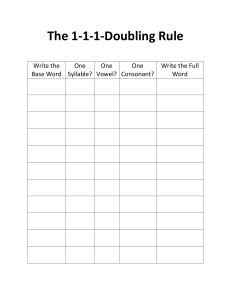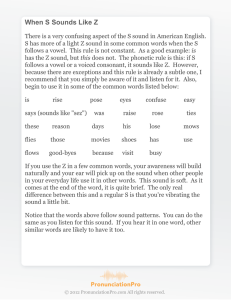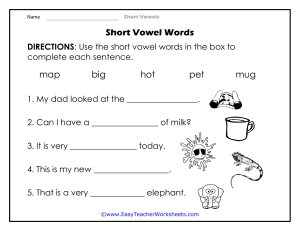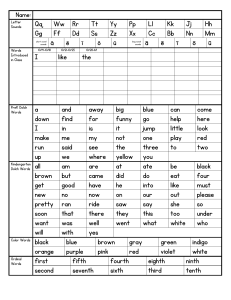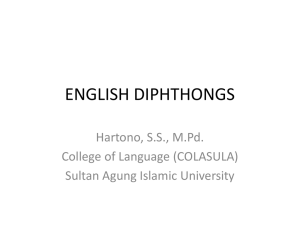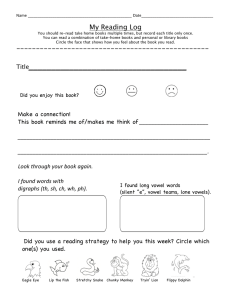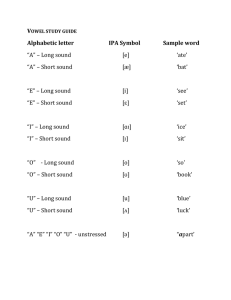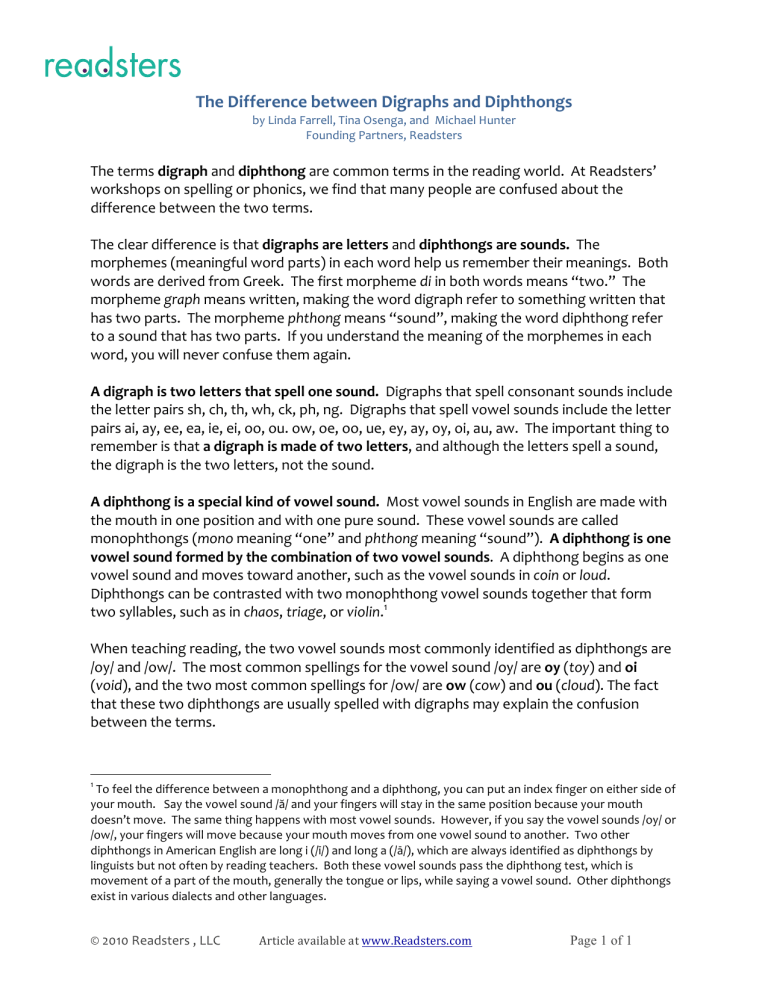
The Difference between Digraphs and Diphthongs by Linda Farrell, Tina Osenga, and Michael Hunter Founding Partners, Readsters The terms digraph and diphthong are common terms in the reading world. At Readsters’ workshops on spelling or phonics, we find that many people are confused about the difference between the two terms. The clear difference is that digraphs are letters and diphthongs are sounds. The morphemes (meaningful word parts) in each word help us remember their meanings. Both words are derived from Greek. The first morpheme di in both words means “two.” The morpheme graph means written, making the word digraph refer to something written that has two parts. The morpheme phthong means “sound”, making the word diphthong refer to a sound that has two parts. If you understand the meaning of the morphemes in each word, you will never confuse them again. A digraph is two letters that spell one sound. Digraphs that spell consonant sounds include the letter pairs sh, ch, th, wh, ck, ph, ng. Digraphs that spell vowel sounds include the letter pairs ai, ay, ee, ea, ie, ei, oo, ou. ow, oe, oo, ue, ey, ay, oy, oi, au, aw. The important thing to remember is that a digraph is made of two letters, and although the letters spell a sound, the digraph is the two letters, not the sound. A diphthong is a special kind of vowel sound. Most vowel sounds in English are made with the mouth in one position and with one pure sound. These vowel sounds are called monophthongs (mono meaning “one” and phthong meaning “sound”). A diphthong is one vowel sound formed by the combination of two vowel sounds. A diphthong begins as one vowel sound and moves toward another, such as the vowel sounds in coin or loud. Diphthongs can be contrasted with two monophthong vowel sounds together that form two syllables, such as in chaos, triage, or violin.1 When teaching reading, the two vowel sounds most commonly identified as diphthongs are /oy/ and /ow/. The most common spellings for the vowel sound /oy/ are oy (toy) and oi (void), and the two most common spellings for /ow/ are ow (cow) and ou (cloud). The fact that these two diphthongs are usually spelled with digraphs may explain the confusion between the terms. 1 To feel the difference between a monophthong and a diphthong, you can put an index finger on either side of your mouth. Say the vowel sound /ă/ and your fingers will stay in the same position because your mouth doesn’t move. The same thing happens with most vowel sounds. However, if you say the vowel sounds /oy/ or /ow/, your fingers will move because your mouth moves from one vowel sound to another. Two other diphthongs in American English are long i (/ī/) and long a (/ā/), which are always identified as diphthongs by linguists but not often by reading teachers. Both these vowel sounds pass the diphthong test, which is movement of a part of the mouth, generally the tongue or lips, while saying a vowel sound. Other diphthongs exist in various dialects and other languages. © 2010 Readsters , LLC Article available at www.Readsters.com Page 1 of 1

